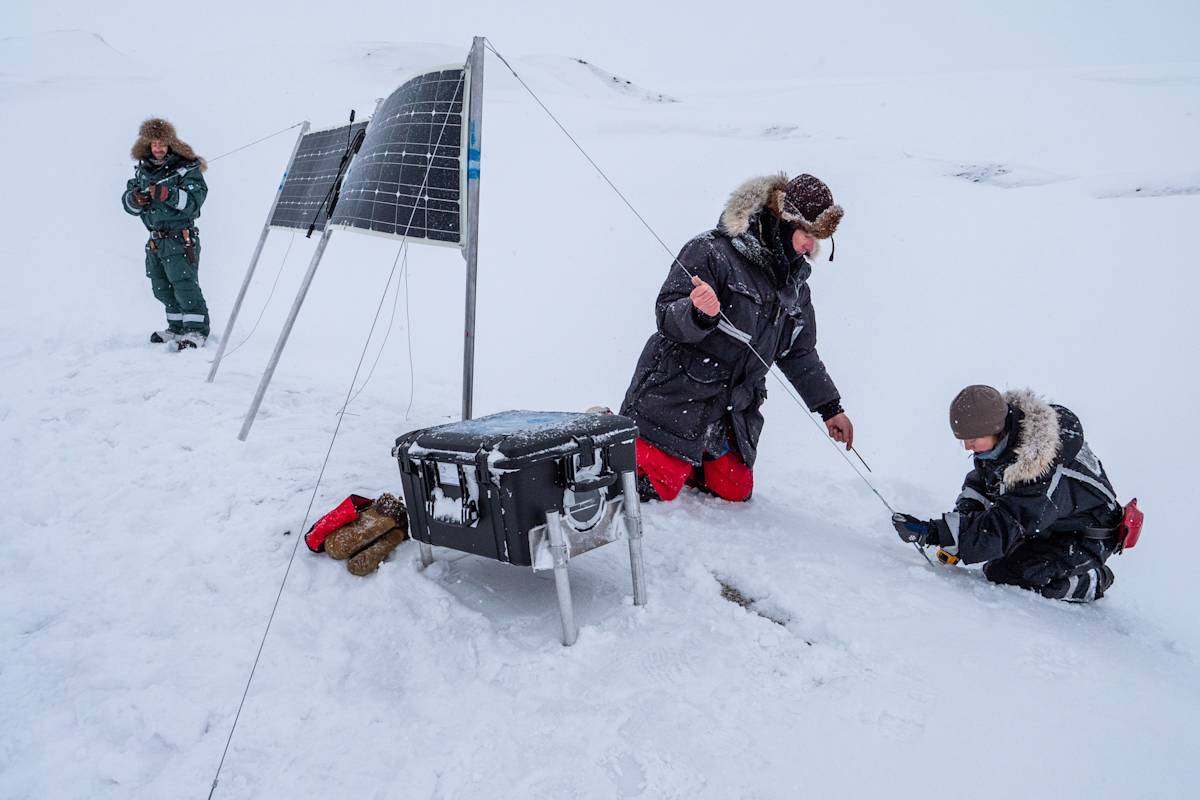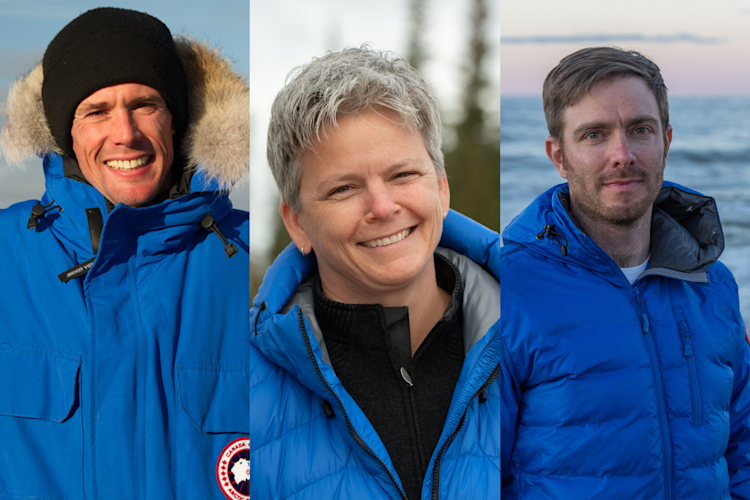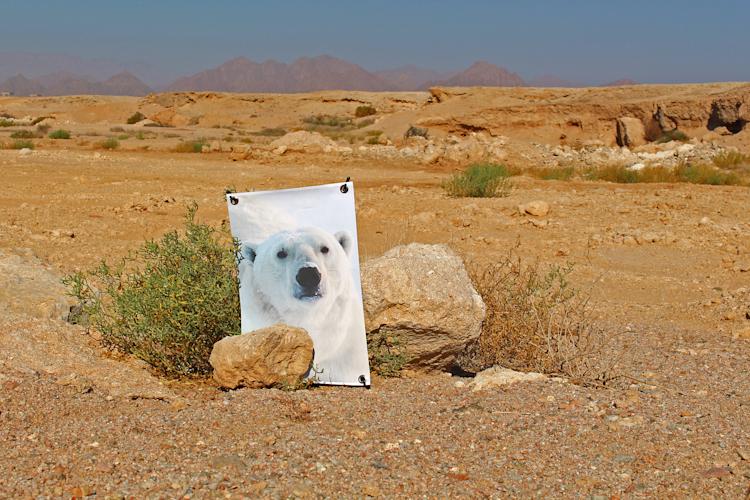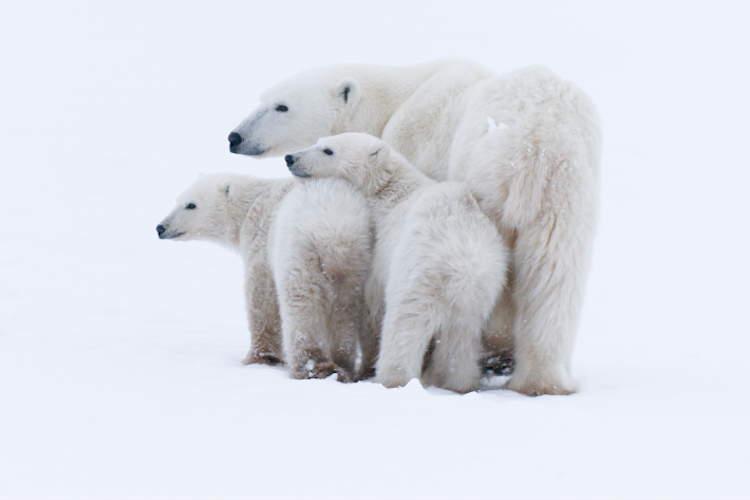As we look back over the past year, we wanted to take a moment to highlight the progress we made together on behalf of polar bears. Here are our Top 10 conservation highlights from 2022.

Photo: Kt Miller / Polar Bears International
BJ Kirschhoffer, Joanna Sulich and Christian Zoelly of the Norwegian Polar Institute set up the remote maternal den cams and solar panels.
Top 10 Conservation Highlights from 2022
MINS
21 Dec 2022
Coexistence Efforts
Thanks to your generosity, we tested 3 “Detect to Protect” radar systems on wild polar bears and are now training the AI software to recognize them. The goal is to alert communities of approaching bears. We also expanded our bear-safe community work from Manitoba, Canada to Ontario—with plans to reach additional polar bear nations in 2023.
Protecting Moms and Cubs
Your support allowed us to deploy 2 remote cameras at polar bear den sites in Svalbard to record the behavior of moms and cubs when they emerge in spring. We also conducted flights over 2 known den sites to test whether Synthetic Aperture Radar, or SAR, can find dens under the snow, building on earlier promising results.

Photo: Polar Bears International
Dr. John Whiteman, Chief Research Scientist; Amy Cutting, Vice President of Conservation; and Dr. Flavio Lehner, Chief Climate Scientist.
Growing Our Impact
This year we added 2 new scientists, 1 vice president of conservation, and 2 new postdocs, bringing our scientific team to 10 people in 4 countries (the U.S., Canada, Denmark, and Norway). This includes our 1st Norwegian-based scientist, who is leading our analysis of den-monitoring data in Svalbard.
Climate Alliance
In 2022, we trained 21 zoo professionals from 3 different countries on the most effective ways to communicate about polar bears, sea ice, and climate change, bringing the total to 186 graduates. The 7-month course empowers graduates to communicate with confidence on climate change, helping to move the dial in their communities. Discover more
Storytelling Bears
Your support of our outreach efforts includes innovative tools like the Polar Bear Tracker on our website. It consistently ranks as one of the 5 most popular pages on our website, with visitors checking out the movements of 15 wild polar bears in Western and Southern Hudson Bay in relation to changing sea ice coverage.

Photo: Emily Ringer / Polar Bears International
Blizzard, a polar bear at the Point Defiance Zoo & Aquarium, is helping his wild counterparts by testing the potential of small, non-permanent tracking devices that stick to a polar bear's fur.
Better Tracking Devices
Thanks to your support, we moved closer to completing work on an innovative new “Burr on Fur” tracking device for polar bears, narrowing the designs from 4 prototypes to 2. So far, we’ve tested 11 tags on zoo bears and 21 tags on wild bears, working with 11 Arctic Ambassador Center zoos and 2 government agencies. Learn more
Polar Bear Tundra Buggy Cam
Arctic Inspiration
Thanks to your generosity, we touched hearts and minds through our live Polar Bear, Northern Lights, and Beluga Cams in partnership with explore.org, inspiring people to care. In 2022, we reached over 4 million people around the world with these windows into the Arctic, including over 3 million views on archived YouTube videos alone!
Global Education
Because of you, we reached students and lifelong learners around the world with 18 Tundra Connections webcasts and live chats. We also partnered with organizations like Students on Ice and Connected North, and added 3 new curricula to our website, including “Paws Up for Polar Bears,” which focuses on climate change and climate action. Watch our archives, above.

Photo: Emily Ringer
Speaking Up for Polar Bears
As a leading voice for polar bears, your generosity allowed us to send 2 representatives to the U.N. climate talks (COP27), while supporting a diverse group of valuable voices. These included Indigenous leaders, youth, climate communicators, and experts in climate action plans who shared their perspectives and insights.
Spreading the Word Far and Wide
In a world of misinformation and digital clutter, you helped us cut through the noise and serve as a trusted source on polar bears, sea ice, and climate change—through our website, social media, and other outreach. In 2022, we were featured in 3,243 unique media articles with an estimated reach of 5 billion people. Explore more
















